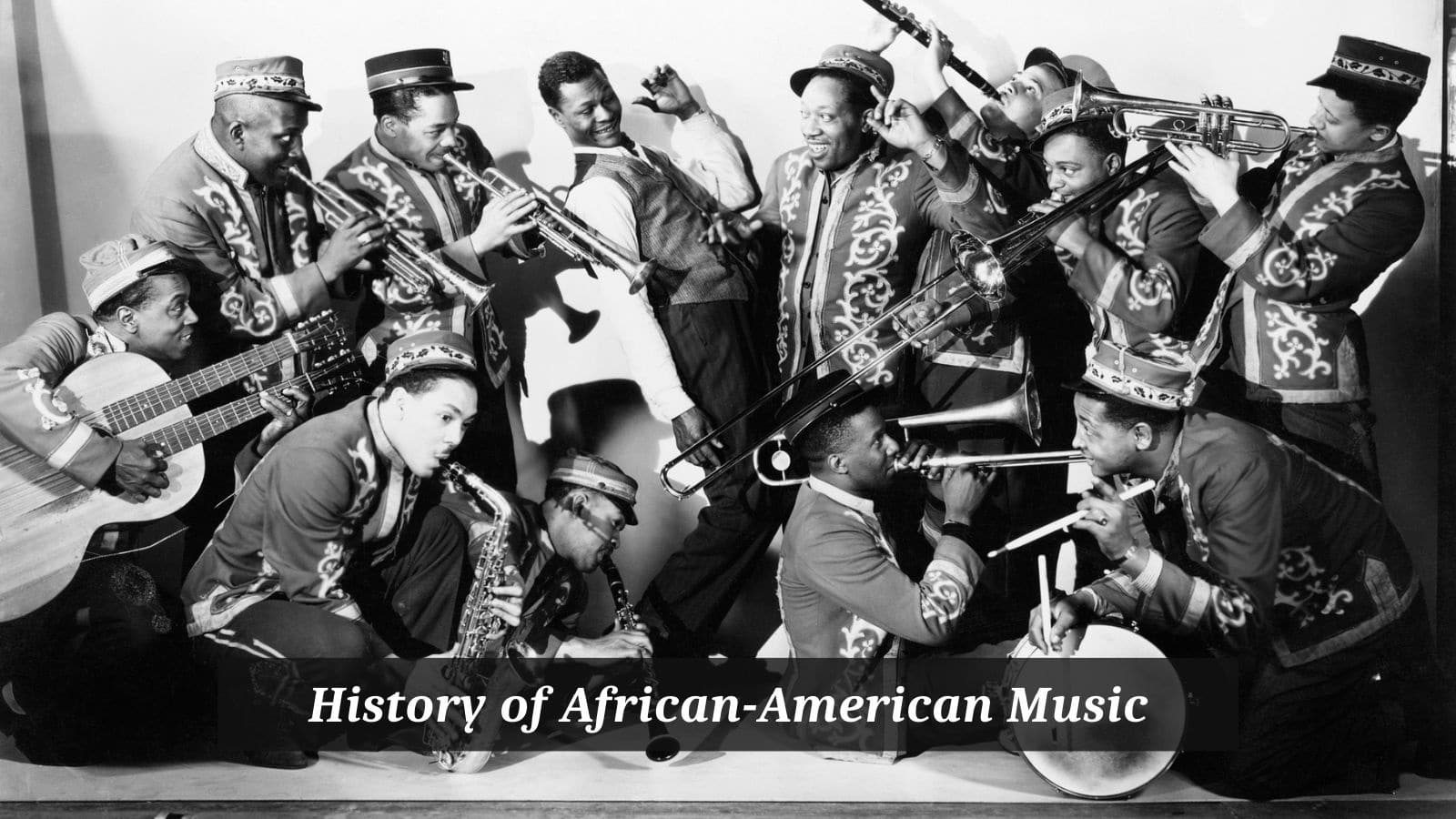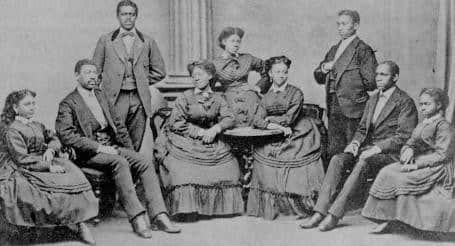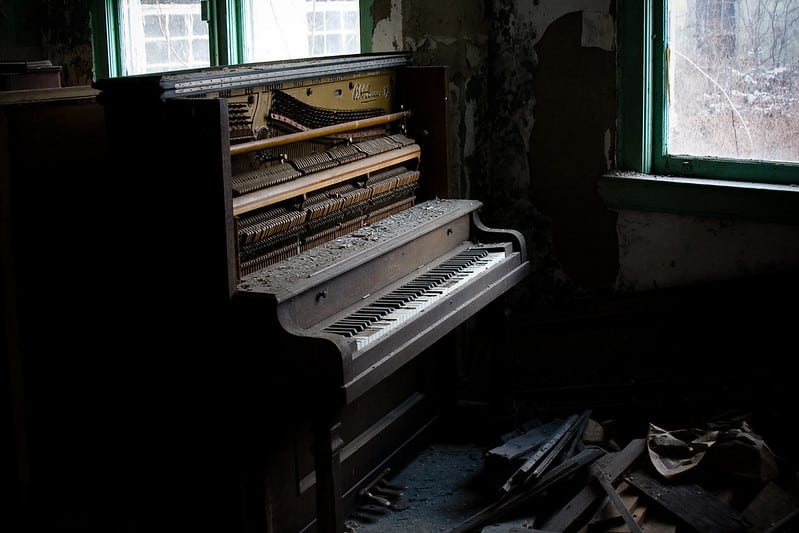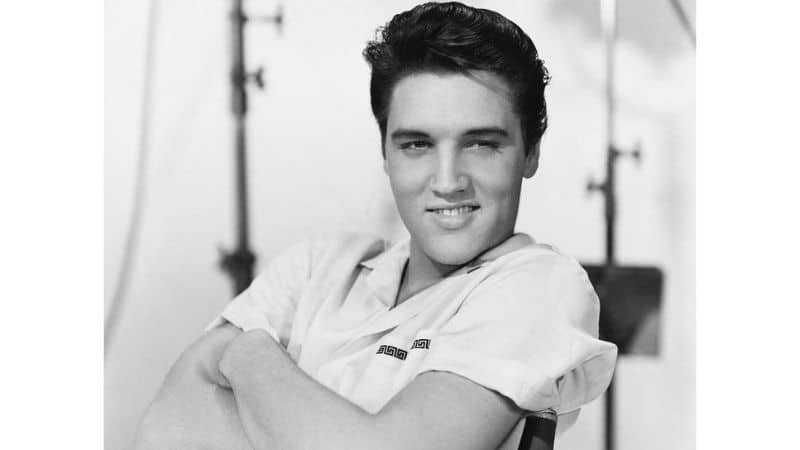
Opening this chapter in musical history is a bitter-sweet experience. When we look into the history of African-American music then we remember the appalling business of the Trans-Atlantic slave trade and all the horrors that involved it.
Africans were forced against their will to travel hundreds of miles in unimaginable conditions to spend their lives working for their white, American masters. The music that came from these enslaved people laid the foundations for many genres of music that evolved in the coming decades.
Their music was the only way they had to express themselves and help them work through their endless toil and collective worship. This music that the early African-Americans created reflected the traditions and practices of their homeland.
Singing was at the heart of their music. Call-and-response songs were passed down from one musician to another orally. Music provided solace from the horrors of their lives.
African-American Music History
What naturally comes from the earliest forms of African-American music are solo and group songs. These simple songs reflect the circumstances the slaves found themselves in as well as show how they began to absorb Western culture into their own.
The influence of religion, namely Christianity, played a significant part in the slave community but equally so did their African heritage.
Songs would broadly be quite repetitive structurally, with a feeling of improvisation and spontaneity key to the performance.
Emotions would have been shown through various vocal interjections such as wailing, trills, shouts, and groans as well as the responses to the leading vocalist. Dance featured in these performances that a likely to have involved the whole slave community.
Thankfully in 1808, the law prohibited the importation of Africans to North America. The effect was to majorly reduce the number of enslaved people subjected to the terrors of transportation across the Atlantic.
Christianity and its associated practices had by this time become a part of the culture of the African-American slaves. This was large because the whites allowed this probably in the hope of civilizing the slaves and bringing about conversion.
What happened is that the African-Americans did it their own way. In secret ceremonies that they called hush arbours, they would gather in secret locations to give thanks to God and celebrate life in a truly African manner.
Feet stomping, hand clapping, and responses to the call of the Preacher characterised these improvised performances that would later be called Negro Spirituals. As drums were banned, the only additional instrument that accompanied the singers was the banjo.
Another huge change was on the horizon. On the 18th of December, 1865 the slaves finally became emancipated. The 13th amendment finally abolished slavery, and with this huge change, more than 100,000 people were slaves no more.
This meant that the African-American people were now able to travel and albeit within limits, live as they wished. They were still far from being free and freely accepted into the dominant white culture.
As difficult as it is to pinpoint a precise time when The Blues emerged in the Southern States of the USA, there is broad agreement that the year was 1860. This was a deeply troubled time in American history.
The lynching of African-American people was horribly frequent and the surge in vigilante groups only served to assist this practice.
Whilst The Blues has its roots in the music of the slave this refers to characteristics such as call and response, simple structure, tonal inflexion and functional harmony.
The Blues, as a genre, stems from songs that highlight the appalling oppression and violence that the newly freed African-Americans experienced.
America lurched towards the new century with a weighty bag of social inequality, violence and prejudice. African-Americans were making positive use of their hard-earned freedom and increasingly the Black minority was standing up to the White authorities.
The outcome was Black heroes that quickly became the subject material for Blues songs. The songs started to tell the stories of these martyrs strengthening the resolve of the African-Americans.
One key Blues musician was Charlie Patton (1891-1934). Patton is felt by many to be the Father of the Delta Blues.
From many accounts, Patton was a gifted musician able to play across a range of popular genres of music including deep blues, hillbilly songs, and 19th Century ballads.
He formed many groups after his family moved to the Dockery Cotton Plantation, Mississippi. For many, this is the home of Delta Blues. Patton worked with and tutored the likes of Howlin’ Wolf and Robert Johnson.
Unfortunately, for people like Jim Crow, the abolition of slavery brought with it an even greater hatred of the freed Black population. Crow devoted his early career to the stage.
Here he cruelly caricatured Black Americans, blacking up his face and carving deep misconceptions amongst his large White audiences.
Crow’s act was so popular and had such an impact on its audiences that the in the Southern States the segregation laws that were passed became known as the Jim Crow laws.
Alongside these abhorrent laws came a fight by White supremacists against the new freedom the African-Americans had recently been granted. This took the form of prison farms.
Of these many farms, Parchman Farm became the epicentre for some of the best Blues music with the stories of life on these slave farms at the heart of their songs.
Another form of African-American music became popular around the turn of the century which was to become known as Ragtime.
With a connection to the songs heard in minstrel shows and the rhythms of the African-American banjo player, Ragtime became a syncopated music adopted by many pianists along the Mississippi.
Many Ragtime pieces were printed. This had the effect of tapping into the white middle-class market and ensuring that the style gained great popularity.
Scott Joplin, the King of Ragtime, published his Maple Leaf Rag in 1899 and set the tone and generated interest in Ragtime for the coming decades. Another Ragtime pioneer, Tom Turpin was the first to publish his Harlem Rag in 1897.
What made the music unusual was that it brilliantly fused the marching-style music of White bands with a gentle syncopation more characteristic of African music. It was a compelling mix that has remained popular even today.
African-American communities became more fully established in the northern cities of America by the early part of the 20th Century. Cities like Chicago and New York as well as cities in the south, especially New Orleans, began to hear a new kind of music: Jazz.
With its roots partially in Blues, Ragtime and Traditional African-American folk, Jazz music began to gain a footing amongst the Black community. Access to instruments was a little easier and pianos, banjos, clarinets, cornets and some percussion became the backbone for early jazz musicians.
From small clubs and bars, Jazz spread like a musical meme into the population of America. The various styles of New Orleans Jazz as opposed to that of Chicago, offering a rich set of possibilities for both Black and White musicians, although playing together was still not widely accepted.
Great artists like Duke Ellington, Count Basie, and Louis Armstrong would become household names in only a few decades. Such was the compelling appeal of jazz that it began to receive radio play which only helped its influence spread.
Jazz had its ups and downs over the next few decades. Swing dominated the War Years, as did the Big Bands that were led by some of the world’s finest jazz pioneers. Some of the most outstanding African-American singers enjoyed huge success during the 30s, 40s, and 50s.
During this time the likes of Ella Fitzgerald, Billie Holiday, Sarah Vaughan, Nina Simone and later Betty Carter. The age of the Jazz superstar had come and at last, the opportunity for White and Black musicians to perform together on an equal footing.
The 1950s saw the birth of Rock ‘n’ Roll. One of the most popular forms of music ever to have existed. Whilst Elvis Presley claimed the crown as King of Rock and Roll, there were so many African-American musicians active at this time who made the sound of the era.
Chuck Berry, Little Richard, Fats Domino, Ray Charles and Bo Diddley to single out a handful of musicians were incredibly influential.
African-American musicians continued to dominate the music scene. Throughout the 60s and 70s through genres such as Rock, Reggae, Ska, Disco, Funk, Jazz and Blues, African-American artists topped the charts, filled stadiums and sold millions of records.
Jimi Hendrix was perhaps the most influential guitarist to surface in the 1960s and Bob Marley whose contribution to Reggae cannot be surpassed.
As the late 70s and 80s came African-American artists developed a new genre of music that stemmed from and was a reaction against the Disco music of the 70s. This would quickly become known as Hip hop.
Around this genre of music, a whole sub-culture grew up facilitated by the reduction in the cost of electronic instruments, notably the sampler. From here came a whole host of popular genres of music that broadly fit under these three letters EDM, (Electronic Dance Music).
Today African-American music is celebrated and acknowledged as of vital importance to nearly every genre of music. Without the rich heritage of African-American music, I cannot imagine where music would be today.



